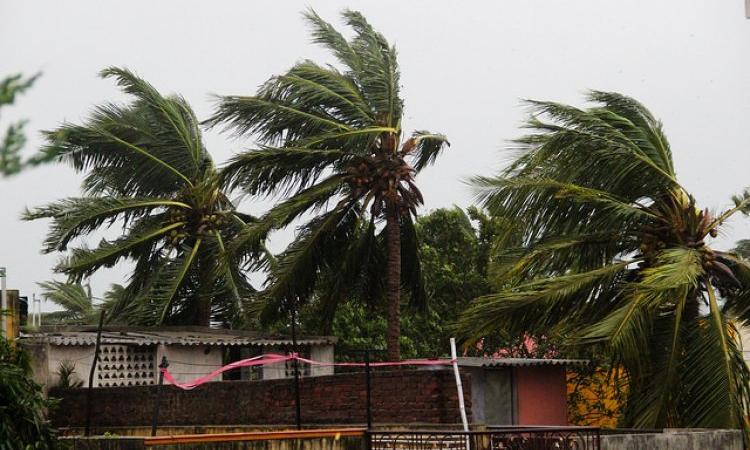
Cyclone Gaja creates havoc in Tamil Nadu
Cyclone Gaja struck the Cauvery delta region in Tamil Nadu at 120 kmph on November 15. The cyclone has caused 40 deaths and left 80,000 people stranded at relief camps. Six coastal districts and three in the hinterland besides Karaikal in Puducherry have been ravaged by the cyclone with Nagapattinam being the worst hit. Heavy damage has occurred to the standing crops in the region which is yet to be assessed. As per the State Disaster Management Agency, 1.273 lakh trees have been uprooted and over 25,000 houses got severely damaged in the cyclone along with severe damage to nearly 450 electricity sub-stations. The state government has sought funds from the Centre to carry out rescue and rehabilitation operations.
Centre to use geospatial technologies for Ganga rejuvenation
The National Mission for Clean Ganga (NMCG) has unveiled its plan to use geospatial and remote sensing technologies- LiDAR (Light Detection and Ranging) and Geographic Information System (GIS)-to strengthen its ongoing river cleaning works under Namami Gange. The use of these technologies, supported by the National Remote Sensing Centre (NRSC), will provide the government with detailed high-resolution map and data of all relevant features of the entire Ganga river basin by next year. The NMCG has already collaborated with the Survey of India to have high-resolution Digital Elevation Models (DEM) for the entire river basin.
Water level in major reservoirs at 64 percent storage capacity, CWC says nothing to worry
According to the data released by the Central Water Commission (CWC), the water level in 91 major reservoirs in the country is at 64 percent of their total live storage capacity. Although the storage for the northern and central regions is better this year compared to their storage last year and the average storage of last 10 years during the corresponding period, the storage capacity is lesser for the eastern, western and southern regions. Moreover, the reservoirs in the southern and western region are at 50 percent of their storage capacity. But as per the CWC, there is no cause for alarm.
A 10 percent cut in water supply for Mumbai
The Brihanmumbai Municipal Corporation (BMC) has decided to impose a 10 percent cut in water supply to Mumbai owing to reduced water levels in reservoirs. There will also be a 15 percent reduction in water supply timings, along with a dip in pressure. This year, the water level in the reservoirs from which the city draws its water stood at 91 percent by the end of September and further dipped to 76 percent. The BMC, however, will monitor the water levels in the reservoirs every month and review its decision accordingly.
Women of Odisha's Balarampur village determined to save their trees
For nearly 40 years, the people of Balarampur village has protected the nearby Jhinkargadi forest against timber mafias. Their forest patch, however, has come into the sight of the state-run Odisha Industrial Infrastructure Development Corporation that is keen to convert the forestland to industrial use. Without any approval, a brewery project is coming up in the region which will require 12 acres of forestland and loss of nearly 5000 trees. When the administration came for possession of the land, however, Balarampur’s women protested the move by physically hugging the trees and preventing the administration's entry into the patch.
This is a roundup of important news published between November 14 - 18, 2018. Also read policy matters this week.